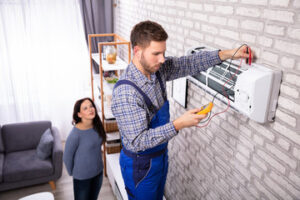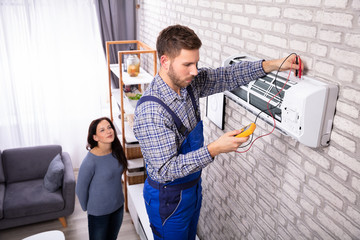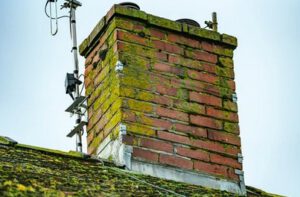If you have a home air conditioning system, keeping up with routine maintenance is vital. This helps to minimize breakdowns and extend the life of the equipment.

It can also save money on your electric bill over the summer months. Visit Website to learn some of the most common AC Repair issues homeowners face.
If it’s been a while since you last replaced your home air filter, it’s probably time to do so. A dirty filter can cause a host of problems, including decreased HVAC efficiency and poor indoor air quality. It’s a small, easy-to-do maintenance task that can help you save money on energy bills and extend the lifespan of your AC system.
When air filters are dirty, they no longer trap airborne contaminants like dust and pollen. This compromises indoor air quality and can trigger asthma and allergies in susceptible individuals. It can also cause uneven distribution of conditioned air, leading to hot and cold spots in your home.
A dirty air filter can also strain your HVAC system and lead to premature wear and tear. This may increase the risk of a breakdown and require expensive repairs or replacement parts.
Over time, a dirty air filter can accumulate moisture inside the HVAC system, which can cause ice to form on the coils. This will affect the system’s ability to cool, and you might notice that the airflow from your vents isn’t as strong as usual. If left unchecked, this problem could lead to the compressor or condenser unit failing completely, costing you a significant sum for a replacement. A clean, fresh air filter can prevent this by allowing the necessary amount of cold air to pass through. This is why it’s important to change your air filter frequently.
Clogged Ductwork
Clogged vents cause airflow issues that can affect your entire home’s indoor climate. It is common for a single air vent to become blocked with small debris such as children’s toys, pet toys, or loose change. In addition, a leaky duct can pull in dirt, dust, mildew, rodent feces, and other contaminants. These pollutants lower indoor air quality and are harmful to your health, causing respiratory problems. The HVAC system works harder to cool and heat your home with clogged or leaky ductwork since it is constantly trying to compensate for the lack of proper air flow.
Leaks are one of the first things an HVAC professional will check for when examining your air conditioning system. These can be caused by a variety of factors including poor installation, corroded seals, and pest damage. These clogs are easily fixed with mastic tape and caulking compounds.
Over time, ducts can develop holes and cracks, allowing moisture to seep in. This will also affect your AC’s efficiency. If the problem is a large hole, a professional will need to remove a section of the duct and replace it. It is also a good idea to have the dampers in your house inspected, as these open and close to control airflow to specific areas of the house. This is another task best left to an HVAC expert. They can also inspect the attic and basement ducts for any signs of problems.
Dirty Condensation Drain
Your AC system removes a lot of moisture from your indoor air, and that excess liquid has to go somewhere. It usually goes into a drain line that runs from the unit to the floor or outside. Over time, dust, mildew and algae can build up inside the line or the drain pan and cause it to clog.
If you suspect the condensate drain is clogged, turn off your AC unit power. Then, locate the drain pan and use a wet vac or shop vac to suck up standing water in the pan.
In addition to physically cleaning the drain pan and drain line, an HVAC technician may also use a wire brush or straightened coat hanger to clear any blockages in the PVC drain pipe access point. They will also pour a cup of white distilled vinegar into the drain line access point and leave it to sit for several hours to kill bacteria, mold and algae before flushing the line with water at the vent exit.
If the clog persists, an HVAC technician will usually try to suction the sludge out of the drain line with a wet vac or drain snake. If that fails, they will remove the PVC cap at the drain vent and spray a garden hose into the open end of the drain line in quick bursts to break up and flush away the clog.
Clogged Thermostat
Your thermostat is a key component of your HVAC system. It communicates with the AC and furnace by sending electrical signals over a wire. If the thermostat stops transmitting these signals, it can leave your home without heating or cooling. Fortunately, a simple thermostat repair can restore the device to normal function.
A malfunctioning thermostat can cause your system to turn on and off repeatedly, or it may not even start at all. This is called short cycling, and it is a sign that your system’s temperature sensor is defective. A professional can diagnose the problem and replace it if necessary.
Another symptom of a malfunctioning thermostat is that it fails to display the correct room temperature. This is usually caused by a bad sensor, but it can also be due to old technology or faulty wiring.
If you have recently changed your thermostat settings, the unit should react by sending an appropriate signal to the HVAC system. When this occurs, you will hear a clicking sound and your air conditioner will start almost immediately. If this doesn’t happen, your thermostat is most likely broken and needs to be replaced.
Thermostats are very sensitive components and should be professionally installed to prevent any damage. Attempting to install one yourself can lead to severe problems, including a broken system and dangerous electrical damage. A trained technician can do the installation quickly and accurately, ensuring your home is safe and comfortable.
Broken Compressor
Your compressor is vital to your air conditioning system’s function. The compressor cools refrigerant before it pumps it through the system so it can create a heat transfer process that cools your home’s air. If the compressor becomes broken, you may experience a number of different problems with your AC.
One tell-tale sign that your compressor is broken is the lack of cool air coming through the vents. If you are experiencing this issue, it is likely that your compressor is either broken or that there is a refrigerant leak. It is important that you seek professional AC repair immediately as a lack of cooling could lead to an even more serious problem like a fire hazard.
Another sign of a broken compressor is when the unit keeps tripping your circuit breakers. This can happen if the compressor is drawing too much power for some reason and can cause the breakers to trip. If you keep resetting the breakers, it is important that you call in a professional to have a look at your system and see what’s going on.
If the compressor is still under warranty, you should check with your air conditioner company to see if it can be repaired. If not, it is likely that your compressor will need to be replaced. Depending on the age of your compressor, it might be more cost-effective to replace it with a newer model.
Faulty Thermostat
The thermostat is the brain of your AC system, and any problem with it can throw off the whole operation. A faulty thermostat can cause AC issues that aren’t always as obvious as other problems, like a low air temperature or a high energy bill. But a professional can diagnose and offer technical solutions for these problems.
A broken thermostat isn’t able to translate the temperature in the room into a command for your AC system. This can lead to delays in cooling your home, and it puts unnecessary stress on the compressor. It also leads to a higher electricity bill, which isn’t good for the environment or your wallet.
One of the first symptoms that something is wrong with your thermostat is a blank or flashing screen. This can happen if the batteries are dead, or if there’s a problem with the unit itself.
Another sign is if you adjust the settings on your thermostat, but nothing happens. You may need to clean the thermostat or replace the batteries, but it could also be a sign that your thermostat is on its last legs and needs to be replaced. Talk to an AC repair contractor about getting a new, programmable thermostat for your home. You’ll save money in the long run with this upgrade.



